Julian McKinnon – 28 July, 2014
Watkins' 'Heir of the Cursed' is the visual centrepiece. It also treads the most potentially contentious territory. The work consists of a totemic ceramic figure perched on top of a tripod in front of a large wall hung colonial era map. The figure instantly evokes the ethnological borrowings of Gauguin and Picasso. It's immediately troubling, more so in consideration of the map. It's impossible to avoid the connotations of imperialism and exploitation.
“The word ‘ivory’ rang in the air, was whispered, was sighed. You would think they were praying to it. A taint of imbecile rapacity blew through it all, like a whiff from some corpse.” Joseph Conrad
Red-gold light sets the skyline of Auckland ablaze. You could envisage its silent burning, beneath torrents of napalm, whilst Jim Morrison intones: “This is the end…” but it’s just a sunset. A little boat is pulling into Westhaven marina. Behind the wheel is a chap by the name of Willard Marlow. He’s a little terse. He’s holding a package of documents in my direction with one hand as the other steers. “Your objective is outlined,” he says. I take the package and remove its contents. For a second I think he’s handed me the wrong dossier. My target is a wolf headed humanoid with dead mullet eyes. The beast called Mammon. So venerated it’s basically a god. To all extents and purposes the figurehead of a global religion. “Are you serious?” I enquire. “Critique with extreme prejudice,” he grumbles sternly.
As we pull in to the Marina, the spire of the Auckland temple of Mammon juts into the skyline, high above all other buildings. I jump onto the pier. “When you’re ready call the airstrike. Bring down the beast. My call sign is Almighty,” he says. “Sounds a bit quasi-religious,” I mutter. He snorts. “Keep your eyes open to the pitfalls of being a white guy writing about white guys making art with blatant colonial references,” he calls out as I wander along the pier toward the city. “I’ll do my best,” I holler back, a little hesitantly.
Prince Philip Movement brings together the work of artists Sam Thomas, Warren Viscoe, and Denys Watkins at RM Gallery. The exhibition is largely comprised of sculptural objects, though there are several paintings and wall based works included. The overall tone seems intentionally faux-primitivist, and invokes a range of themes - cargo-cultism, colonialism and missionary zeal, exploitation and the shadows of empire. The title itself references a religious sect in Tanna, Vanuatu, which maintains that Prince Philip, Duke of Edinburgh, is the living embodiment of a mountain spirit from the volcanic island (1). The works are constructed variously of carved wooden objects, repurposed crates, ceramic figures, painted metal constructions, cast resin, polystyrene, painted canvas, a colonial map, and LED lights. This exhibition could be construed as a bizarre ethnological commentary, though it is the interpretation of this critique that the themes invoked are focussed on contemporary culture and social order.
Wandering the streets, Mammon’s influence is clear. Many are the sunglass bespectacled smart-phone users that fawn at its haunches. Many are their wants - though none greater than foreknowledge of a string of six numbers, and the correct call of a coin toss, that will yield deliverance from all worldly toil. The Mammonites they’re called. And who here among us could say we’re not one of their number?
Watkins’ Heir of the Cursed is the visual centrepiece. It also treads the most potentially contentious territory. The work consists of a totemic ceramic figure perched on top of a tripod in front of a large wall hung colonial era map. The figure instantly evokes the ethnological borrowings of Gauguin and Picasso (as do his other works Foreign Gods, a bipedal ape figure on a slender wooden plinth, and Surprise Defeats a Warrior, another totemic ceramic). It’s immediately troubling, more so in consideration of the map. Scripted in Flemish, the map depicts what was then the Belgian Congo. It’s impossible to avoid the connotations of imperialism and exploitation. Is this an obscure history lesson or commentary on the bygone ills of colonial Africa? More likely it points to something closer to home.
Western complicity in Congolese bloodshed has a long history, both predating and subsequent to the barbarous regime of King Leopold II of Belgium. Yet, perhaps more disturbingly, the shadowy tendrils of contemporary consumerism claw unchecked into the earth of the Congo to this day (2). Another of Watkins’ works draws reference directly to Aotearoa. Moa Bone is an uncomplicated painting, presenting a blue-greyish bone figure against a soft yellow background. This Moa bone has been a recurring motif in Watkins’ paintings in recent years (which, on evidence of the paintings presented in this show, have become increasingly reductive). It’s associations with a homegrown tale of unchecked consumption are obvious, though its place in a broader framework, perhaps less so. The Earth has known five big occurrences of mass extinction. These big five have been caused variously by changing sea levels, shifts in atmospheric composition, asteroid impacts, etc. A sixth, and by orders of magnitude the fastest, is well underway. This time, however, the cause is us (3).
I watch a recording of Mammon playing on an HDTV screen at Dick Smith. “I love the smell of extinction in the morning,” it says, its dead-mullet eyes staring blankly in the direction of the Taranaki basin. “55 Maui’s dolphins left in existence. Fait accompli, they’re fucked already. Drill baby, drill! Who’s with me?” it cries. “Hurrah!” whoop the Mammonites, in deathly chorus. “Smells like victory,” says Mammon with a dull, lazy smile.
Warren Viscoe’s muted wooden sculptures speak a more subtle language. They seemingly materialise the collision of cosmologies that came with Western colonialism, yet remain sharply contemporary. In the Land of the Hermit Crab presents us with a procession of figures sheltered beneath a structure. Two nearby crucifixes lend it a religious connotation (The Ten Wishes of Claudia St Louis: a cross hung with 10 chicken wishbones and topped by a totemic face, and Good News Relic: a textured work, reminiscent of coral). To my mind it poses a question: are reassuring beliefs a shelter from the ills of the world, or a choice of wilful blindness? Though its language of form speaks more of the Pacific, Viscoe’s conjuring of transplanted faith sparks association with another story drawn from the long, deep, winding river that is Congolese history. Barbara Kingsolver’s The Poisonwood Bible, set against the backdrop of Congo’s political turmoil of the early 1960s, tells of an American missionary leading his family into great calamity with dogmatic conviction. At a time when climate change, bio-diversity decline, bee colony collapse disorder, ocean acidification, etc imperil our very civilisation, the reassurance of the economic doctrine of free markets and endless growth seems increasingly like the wilful ignorance of a misguided faith (4).
Once more in the streets, the high priestess of the New Zealandese order of Mammon is intoning the daily ritual as the sacrificial heifer is eviscerated. “May the bovine goddess smile upon us. May she forever turn a blind eye to our river water nitrate levels. May she bestow on us the blessing of strong global prices for dairy solids. May she see to it that our imported electronic goods are plentiful and cheap.”
Sam Thomas’s assemblages offer a point of contrast to the work of the two senior artists. Ambassador fleetingly resembles an old TV set, with a disproportionately large pair of antennae. The ‘bunny ears’ are large carved wooden objects, resemblant of Cook Island log drums, inset with strips of LED lights. They’re packed into a plastic faced wooden case filled with polystyrene packaging. The end result looks like a collision between consumerism and tribalism. The undercurrents are more pronounced in Cargo Expectations, an object adorned with black banana-shaped castings and a wooden panel inset with an LED screen. Numbers reel across the screen, like a stock-ticker or lottery draw. This work in particular led me to a reading of contemporary consumer culture as cargo-cult. Our cultural rituals of work and quasi-religious observance of the financial marketplace are largely conducted in the hope of material bounty. The omnipresence of avarice in media culture, particularly advertising, is undeniable. So ingrained is it, that little question is ever raised of the constant intrusion of commercial principles into nearly all aspects of contemporary life.
“Ho ho ho,” croons Mammon from the tele-visual pulpit. “It’s called the Anthropocene, folks. You’re anthropoids, so it’s all about you!” Ecstatically the Mammonites cheer. “It’s all about me!” they cry with one voice. “The overburdened banquet table of consumerism is yours, all yours,” Mammon cries wolfishly to their applause. “Eat I say, for it is your Western privilege birthright.” The Mammonites are jubilant. Gotta hand it to it, this Mammon creature is just running wild. Devouring everything in sight, contemptuous of objection. Enacting unbridled, rapacious greed. What balls.
The history of the Congo holds, in its repository of collective experience, some of the most horrific manifestations of earthly injustice, greed, covetousness, oppression, etc. Yet, much of it remains to us, here in the comfortable West, invisible, glossed over, forgotten. Some semblance of this idea is present in Joseph Conrad’s classic Heart of Darkness. Watkins’ Heir of the Cursed offers an uncomfortable reminder. For all this Prince Philip Movement is a relatively understated exhibition. It makes for enjoyable and thought provoking viewing. As to whether this analysis, of cultural blindness, avarice, and the perennial darkness of the human beast, has made too much of a map, a cross, and a reeling string of numbers, I’ll leave to your judgement.
“Streetgang, this is Almighty. Do you copy?” crackles over my smart phone radio app. Oh Willard Marlow, not now. You want me to call in the airstrike, I know. But I’m trying on some new shoes. Also, I apparently qualify for a 24-month interest free period on some shiny electronic gadgets if I purchase them now. It really isn’t a good moment. Besides, I couldn’t give you coordinates; Mammon is everywhere, at once.
I look around for the wolf-headed one, awaiting its next encouragement for my newfound fervour. But the beast has grown ill. Its wolfish head hangs low. It’s ingested so much that if you were casting it in a movie you’d have to film it in darkness to disguise its corpulence. No problem for the big media clergy, who, whatever happens, will affirm the faith.
However, Mammon itself is doubtful. “Endless consumption isn’t possible on a finite planet,” Mammon groans, rubbing its distended belly. But Mammon, it’s Big Wednesday - the day of sacrament in your honour. Surely you can’t renounce on this of all days? Reluctantly Mammon’s dead mullet eyes fixate on the large screen in front of it, trying to reignite the ravenousness. To no avail. Feebly, helplessly it watches. “The Horror, the horror!” it whispers, as the gaily-coloured balls tumble downward.
Julian McKinnon
(1) See: http://en.wikipedia.org/wiki/Prince_Philip_Movement
(2) See: http://www.bbc.com/news/magazine-24396390
(3) For a quick, general summary see: http://web.archive.org/web/20070607101209/http://www.amnh.org/museum/press/feature/biofact.html
(4) Ramifications of ocean acidification: http://newswatch.nationalgeographic.com/2009/02/02/ocean_acidification/
Ramifications of bee colony collapse: http://e360.yale.edu/feature/declining_bee_populations_pose_a_threat_to_global_agriculture/2645/
Biodiversity decline and human well-being: http://phys.org/news/2012-06-loss-biodiversity-increasingly-threatens-human.html
Climate change and civilisation: http://climate.nasa.gov/news/1010/
Recent Comments
Emma Fox
The map in this exhibition has gone missing, presumed stolen. Denys would like it back no questions asked.
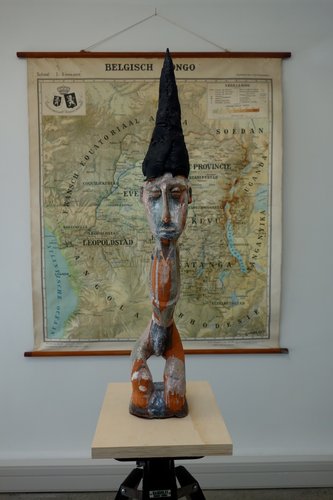

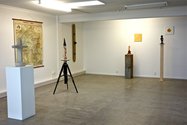
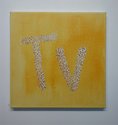


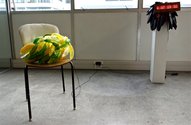


 Advertising in this column
Advertising in this column Two Rooms presents a program of residencies and projects
Two Rooms presents a program of residencies and projects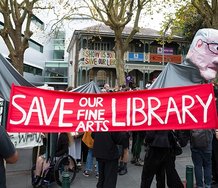


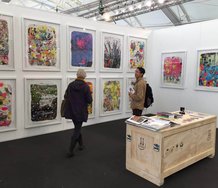
This Discussion has 1 comment.
Comment
Emma Fox, 3:11 p.m. 1 August, 2014 #
The map in this exhibition has gone missing, presumed stolen. Denys would like it back no questions asked.
Participate
Register to Participate.
Sign in
Sign in to an existing account.